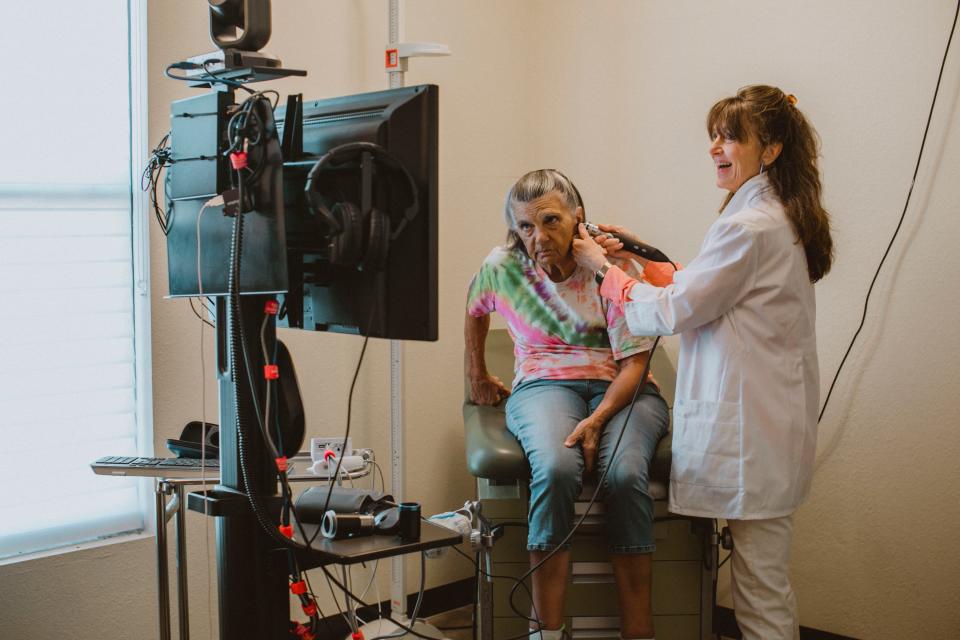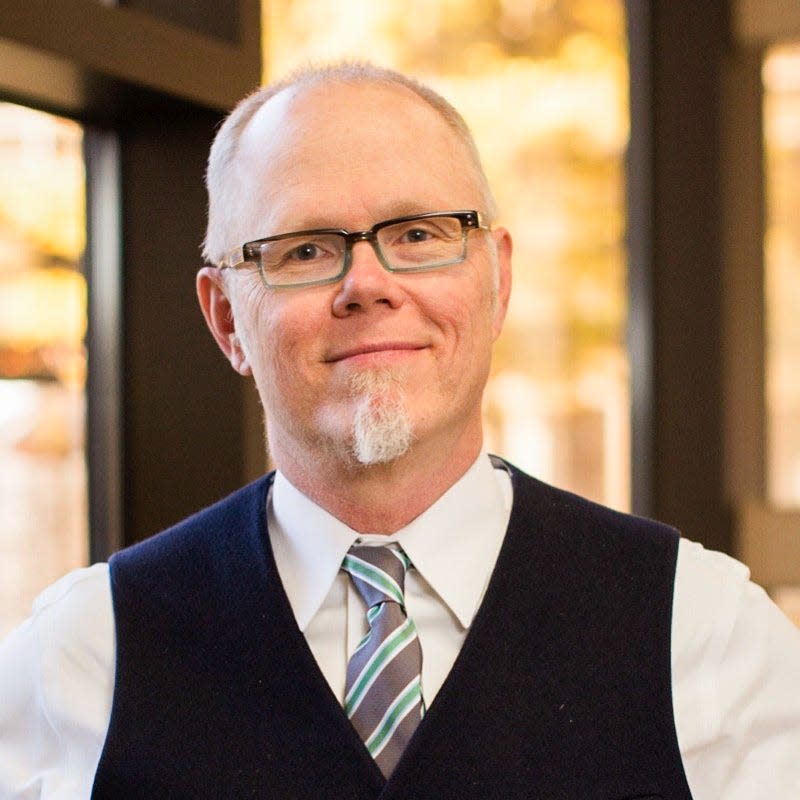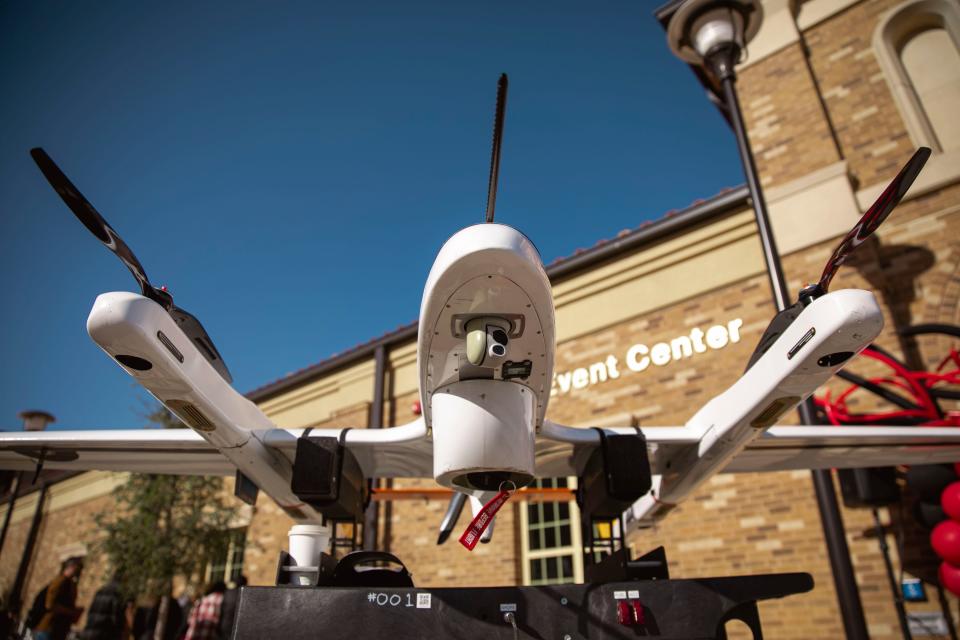Part 3: Connecting rural Texas to medical care through telehubs, drones
Down in the Big Bend region of Texas sits a small town with a population around 400 people about 300 miles southeast of El Paso.
Located in Brewster County sits the City of Marathon, where the Texas Tech Health Sciences Center is taking the lead in rural telehealth and changing the medical system. That 300-mile distance from the nearest city with significant medical resources poses challenges for healthcare access - but it's also the inspiration for medical leaders from TTUHSC and others looking at technology to develop solutions.
The new approach to rural healthcare
Not being able to keep a doctor within the clinic in the city, TTUHSC decided to put a virtual doctor in the clinic instead.

Director John Gachago of the TTUHSC’s new Institute of Telehealth and Digital Innovation said the office is staffed by one person who can be there for patients to schedule appointments and process intake forms.
“Then she has to go to the library and fax them,” he said. “The fax then goes to our offices, and then somebody in our office takes a fax and this patient is going to be scheduled (for an appointment).”
In a demonstration video presented to the Texas Tech System Board of Regents February Meeting in Odessa, patients of the clinic will walk into a room and see a physician on a screen who will talk with them about what brought them into the clinic.
If needed, the physician has the capability to listen through the heart and lungs via a Bluetooth stethoscope in the clinic while also taking other vitals as needed.

This interaction will allow physicians to prescribe medication as any doctor would and schedule them for testing if needed.
With the success the clinic is currently seeing, Gachago said TTUHSC is looking to new technologies like artificial intelligence to help create a predictive model of health that would allow doctors to take precautionary steps to prevent disease.
“We're really looking at rural health as an opportunity to say, how can we take these emergent technologies from AI, blockchain, and the internet of things to fix that gap in healthcare that currently exists,” he said.
However, Gachago said the use of AI is still a ways away, but there is one piece of technology the Marathon Clinic will start implementing in December — Uncrewed Aerial Systems, also known as drones.
The sky is the limit to helping improve rural healthcare
Making its first public experience in 2021, the TTUHSC partnered with 2THEDGE to create the Matador Consortium, where community partners can come together to see how commercial drones can be used in a rural healthcare and agricultural setting.
Phil Sizer, associate vice president for Research Innovation for TTUHSC, said the consortium focuses on eight areas, with four being agricultural-related, such as herd management, crop management, large animal tissue transport and renewable energy infrastructure support.

The other four areas are healthcare-related — transporting live organs for transplant surgeries, search and rescue operations, job training for drones, and short and long-range rural healthcare support.
Organ donor sky transportation
When it comes to transporting organs, Sizer said time is important for the viability of organs from the point it is harvested to the point it's transplanted into another person.
In 2022, Sizer said, nearly 7,500 kidneys were lost due to transportation issues.
As of Sept. 6, around 103,298 people were waiting for an organ transplant - and kidneys were the No. 1 organ needed, with 88,500 people waiting for one.
Sizer said the program can transport organs in a fraction of the time and at a fraction of the cost.
“We flew three organs from Lubbock to Oklahoma City to San Antonio and back to Lubbock,” he said. “We collected tissue samples at each landing site to see if there was a macroscopic deterioration of the tissue and there was none.”
He also said during this test, during the amount of time the drone left Lubbock and arrived in Oklahoma City, a car carrying a similar package had barely reached Tulia, Texas - about 70 miles north of Lubbock.
The eyes in the sky during disasters
Sizer also said drones can be a valuable asset in the instance a search-and-rescue team can not get to a site via a vehicle.
Already running tests, Sizer said one drone can carry the weight of 100 meals along with vaccines and transport it to a rural area.
Another way the drones are currently being tested is to work in partnership with the TTUHSC and the State of Texas Commission on State Emergency Communication’s NexGen 911 EMS pilot program as mentioned in the previous story.

“What we could use the drone for is, number one, we use it to bounce (broadband) signals,” he said. “Another thing we'd use it for is high res optics — searching the area so that the Tier 1 Trauma Center understands the nature of the injury and the person that they're taking care of and use the optics to zoom in on the patient so that on the cellphone, the trauma surgeon can guide EMS in helping them with the rescue.”
Sizer said these uses for drones are still being tested, but having drones deliver items to rural areas is about to be implemented soon.
The new healthcare transportation service
Taking the organ transportation and the rescue delivery models, TTUHSC is scaling them down to start with transporting medicine and patient samples to and from rural communities.
Director Gachago said they will start implementing this model in December, starting with its telemedicine clinic in Marathon.
TTUHSC is working with LapCorp and Quest Diagnostics to make this happen.
“So we pick up the specimen and take it there, and then potentially we would get the results to the extent that we can avoid any sort of HIPAA violations,” he said.
Sizer said this would help the benefits of telemedicine visits with patients in the way that patients won’t need to travel to testing sites in big cities after visiting with a doctor.
But doing such a revolutionary thing means the infrastructure for the program has to be built from the ground up.
“We are working with the (Federal Aviation Administration) to establish the first regional drone corridor network of shielded airspace that's beyond visual line of sight,” Sizer said.
These drones would be in protected airspace below 400 feet, where nobody would tamper with them.
Sizer said there is already a lot of interest and buy-in from the FAA on this program because it hopes to size these corridors on a national level.
Training the workforce of the future for commercial drone operations
The fourth and final area in healthcare the program focuses on is training those who will be piloting these drones.
Forbes predicts the drone market to have an economic impact of $5.1 billion by 2025, while, according to NASA, the United States will see around 6 million drone “missions” per day around 2030.
With a robust market comes the need for employees, TTUHSC is looking to source the talent locally.
“We're partnering with South Plains College,” Sizer said.
With SPC’s president working on building the curriculum, TTUHSC is working on securing the necessary laboratory equipment for the students to practice with.
But TTUHSC is taking it one step further.
“We're partnering with (Education Service Center) Region 17 here to bring drone education to all the school systems in that region,” Sizer said.
Through the drone program and the creation of the new TTUHSC institute, Gachago said they are finding ways to be innovative with their current technology.
“The way we're looking at this rural health scenario and saying, How can technology be the differentiator,” he said. “How can technology work so that you living in Alpine and in Presidio can get good quality care, even though there's a long distance between you.”
More in this series
More: Part 1: COVID-19 might have exposed the cracks, but the rural healthcare system is broken
More: Part 2: When faced with a broken EMS system, rural Texans band together to fix it.
More: Part 4: Helping aid the local child mental health crisis through telehealth, collaboration
This article originally appeared on Lubbock Avalanche-Journal: Connecting rural Texas to medical care through telehubs, drones
